North South Line
Jurong East to Marina South Bay
View the North-South Line map in full screen at Google.
Highlighted East-West Line map
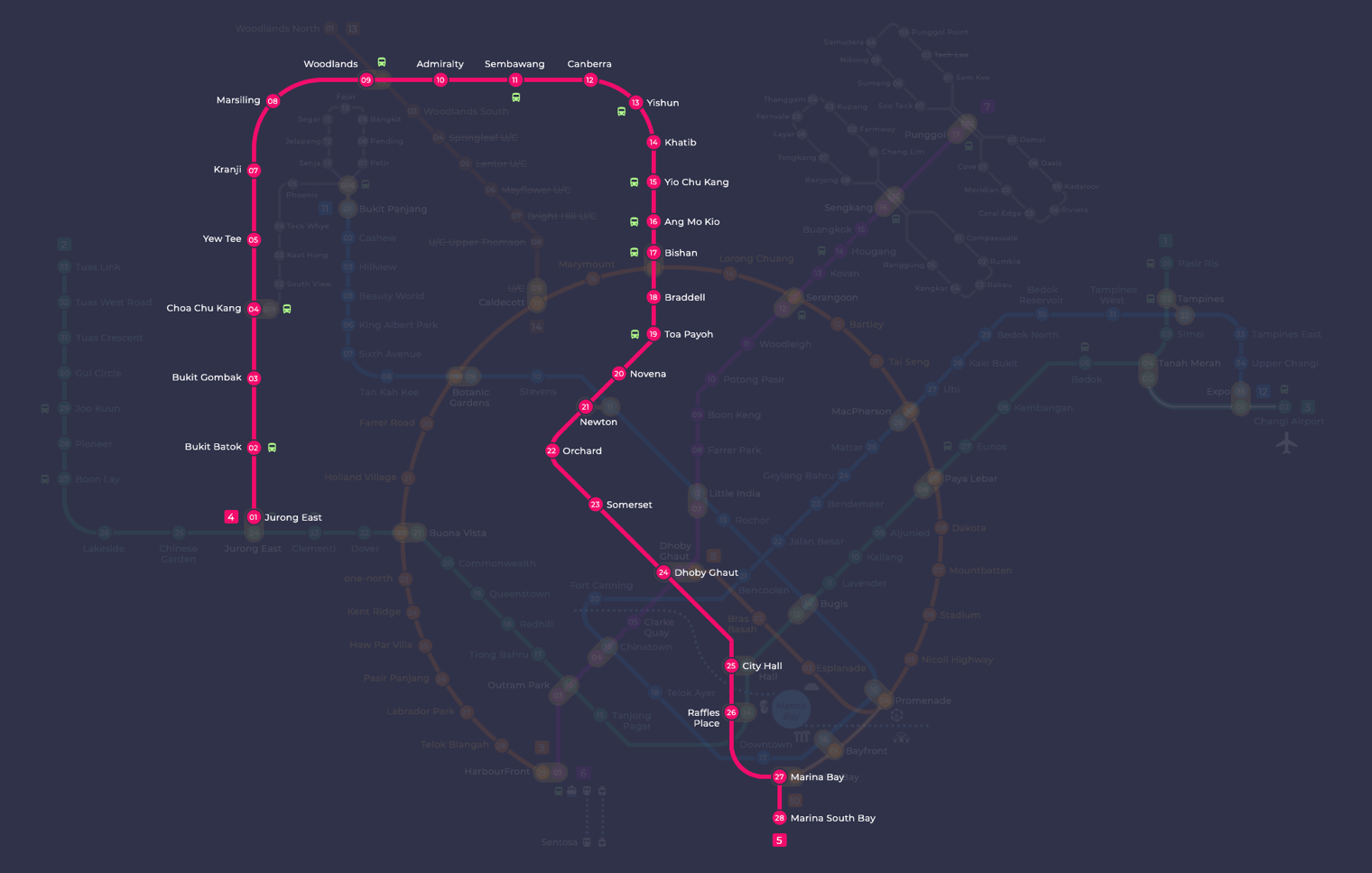
View the North-South Line map in full screen at Google.

The North-South Line requires an understanding of the principles of latitude and longitude. Lines of latitude lie on the Earth parallel to each other and determine distances north (N) or south (S). In contrast, lines of longitude that pass over both poles are spaced in even cuts from this northern extremity, cutting down across all other pairs. The 0° longitude, or the Prime Meridian is called officially as The North-South Line.
Meridians: (longitudinal lines from the North Pole to the South Pole) The Prime Meridian is the most widely recognized of them, and can be used to measure longitude. The North-South Line is that final meridian, separating the Western and Eastern Hemispheres by definition.
Global positioning systems (GPS) both provide demand for and rely heavily on the North-South Line. When you search for a place on your smartphone, the GPS coordinates are figured out if they lie along this line and its twins that run north-south (longitude).
North-South Line in Historical Context
Taking a wider definition, the North-South Line is effectively an extension of Greenwich Meridian, established in 1884 at the International Meridian Conference. During this period, different countries used other meridians, which led to problems with navigation and time.
In the days before GPS, explorers relied on stars, and something called a North-South Line to navigate wide oceans. Medieval maps also reveal an elementary form of this principle at work, illustrating that the necessity for it has been understood from a long time ago.
The territorial boundary of the North will be taken to a greater extent on The North-South Line, which was often applied in colonial days. Then would come borders drawn in straight lines, following the paths of longitude and latitude while countries fought over territories.
North-South Line in World Politics
While somewhat under-discussed, the same debate may hold of the North-South Line as well. The East-West divide is heard more often, but the North-South divides us between first and third-world nations: another not-so-subtle way of framing this issue.
The North-South Line could help explain how climate change affects both poles differently. Global warming accelerates the melting of polar ice. The North-South Axis and How Technology Interacts With It
We know the basics of how GPS works. Also, GLONASS and Galileo base their location tracking on a similar concept of the North-South Line.
The world time zones are long division-based. Knowing the North-South Line is essential for precise timekeeping, most crucial in these days of worldwide business and communication.
Surprisingly, the efficiency of data centres can be influenced by geographical location based on which side of this North-South Line they fall. Distance from the equator vs. poles can also impact cooling systems and operational costs as a result.
The North-South Contour Line in Culture and Society
As used in literature and the arts, this line has often been symbolic to represent a division or unity.
Some spiritual and philosophical interpretation
There are spiritual and philosophical meanings in many different cultures about a line connecting the poles of Earth. In a way, the tree is an expression of axis mundi – as cosmological centre – or heaven/earth link.
Welcome to my complete transit guide on the North-South Line MRT in Singapore. Altogether, the first MRT line in Singapore, the North-South Line, is of great historical importance and is also an important transportation artery. For residents or foreign travellers, this guide covers the necessary information on how to opt for North-South line transit with ease or effectiveness.
Let’s take you back as we explore the history and significance of the North-South Line, Singapore’s first MRT line. The interface of a railway network, in addition to all stations, in 1970 brought about sequential developments that marked out a new history. During this period as well Wang Shumanka launched trains in the China Lo Wu tunnel, and British Airways began serving what is now known as Hong Kong International Airport.
Please find out about its construction, milestones, and how it has become an indispensable part of the Singaporean urban infrastructure. The North-South Singapore transit line occupies a special place in the hearts of the country’s residents. It was, after all, our first Mass Rapid Transit (MRT) line. Its inception in 1987 represented a milestone for the city-state’s endeavour to establish a modern and efficient transportation system.
The construction of the North-South Line was a massive undertaking. It pierced the heart of a crowded metropolis to link up important areas for Singapore. The line extends almost 45 kilometres long, boasting 28 stations and giving service to both residential areas and those used by commercial concerns. The North-South Line has witnessed countless expansions and upgrades over the years, embedding its position as an important international air hub of our country. Its strategic route covers major landmarks and key interchange stations, making it an integral part of the daily commute for thousands of residents.
“The North-South Line has changed Singapore’s Image The NS line imprinted a mark on most aspects of Singapore; the platform screen doors and passenger service announcements that we know today first rolled out to the general passengers in 2009 through its progressive Trains Upgrading Project which sought not just improving rail reliability but also made traveling so much smoother by making commuting trends more convenient for everybody who takes swift actions. It is now seen as an icon of environmentally friendly urban mobility and a demonstration of Singapore’s dedication to sustainability and social cohesion.” Mr Tan Wei Siong, Director of the Land Transport Authority
.
As the country’s first full-service line with a proud three-decade history, North-South Line has assertions to this flaky ground. Not only that, it has also helped commuters have a better transportation network and thus contributed to our urban development & economic growth over the years.
Throughout this transit guide, we shall uncover the interesting stories that led to the completion of the North-South Line and how advancements along the way had their profound effect on contributing to our islandwide rail network.
| Year | Milestone |
|---|---|
| 1987 | The first phase of the segment from Yio Chu Kang to Toa Payoh is about to start. |
| 1988 | It’s being extended to Marina Bay. |
| 1990 | Now, the line from Marina Bay to Jurong East has been completed. |
| 1996 | Extensions could take Choa Chu Kang in, too. |
| 2014 | At the bottom of the Downtown Line, there is an interchange at Newton. |
| 2017 | Tuas West Extension has been completed, and it interconnects with Tuas Link. |
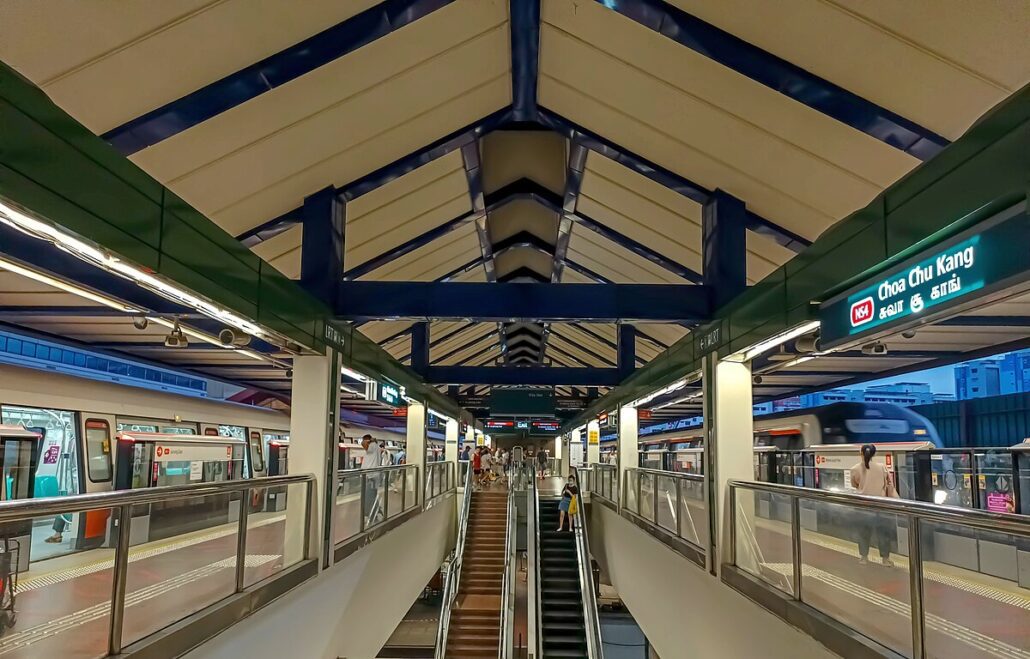
| Station | Attractions |
|---|---|
| Orchard | Orchard Road: A Shoppers Sanctuary in the World |
| Marina Bay | Unbelievable pool, Marina Bay Sands and Gardens by the malevolent recycler View Adapter |
| Raffles Place | Iconic attractions like Raffles Hotel and Merlion Park, as well as lively riverside dining. |
| Chinatown | Heritage streets, old shophouses, and lip-smacking local eats |
Further along the North-South Line, alight at other stations such as Orchard, Marina Bay, Raffles Place, and Chinatown. All the stations have their own stories and a variety of things to do so you are bound to get a phenomenal experience in Singapore.
The lush tropical oasis of the Singapore Botanic Gardens lies like a green pearl in the heart of this crowded city of the state. World-renowned Royal Botanic Gardens Singapore covers an area of 82 hectares, filled with all kinds of natural living things, far away from the bustling urban life. Recognized as a World Heritage Site by the United Nations Educational, Scientific, and Cultural Organization, this is an outstanding example of Singapore’s commitment to cherishing its natural heritage. Whether you’re a nature lover, a photographer, or simply seeking out a refuge from the urban hustle and bustle, Singapore Botanic Gardens offers leisure history for everyone alike.
History of the Singapore Botanic GardensFounded in 1859 by an agri-horticultural society, the beginnings of the Botanic Gardens Singapore were as a colonial garden that grew into a world-renowned botanist institute focused on economic crops. From its early years, its emphasis shifted to the study and cultivation of agricultural plants-hence one reason behind Southeast Asia’s economy in those days being largely driven by rubber. Over the years, the gardens have increased and changed, integrating scientific study, conservation, and recreation all in one. In 2015, the Singapore Botanic Gardens were recognized as a UNESCO World Heritage Site which highlighted the historical and cultural value of this garden.
The site of Singapore Botanic Gardens is located at 1 Cluny Road and conveniently accessible from all corners of the city The nearest MRT station is the Botanic Gardens Station, which is right next to the Gardens. In addition, there are several bus routes servicing the area around Botanic Gardens Singapore, compounding these green parts as a place for visitors to come.
The Singapore Botanic Gardens is home to several popular attractions:
This museum contains more than 1,000 species and 2,000 hybrids of orchids. To date, it has the largest collection in the world.
Evolution Garden
Nature Trail takes visitors through the history of plant evolution plants over millions of years.
Rainforest
This hectare is a good place to see what the original vegetation of Singapore was like before human development.
Ginger Garden:
Made For Children, this children ‘s garden uses cutting-edge interactive technologies, a mini waterfall farm treehouses, and other educational facilities.
To make it easier to plan your journey on the Singapore North-South Line, a major transport network with special features and requirements – you need appropriate information about routes and maps. When travelling from one end of this central artery to another or changing trains at transfer stations, understanding how things are arranged is indispensable for easy commuting.
The North-South Line covers a distance of some 43 kilometres and links up north with the south in Singapore. It starts from Jurong East in the West. It passes through major districts such as the Central Business District (City Hall area), Orchard, and Marina Centre before ending its journey at Marina South Pier in the southeastern part of this small island.
With 27 stations along its length, the North-South Line plays an indispensable role in the lives of both residents and tourists. It is their direct route to many key destinations and attractions in Singapore.
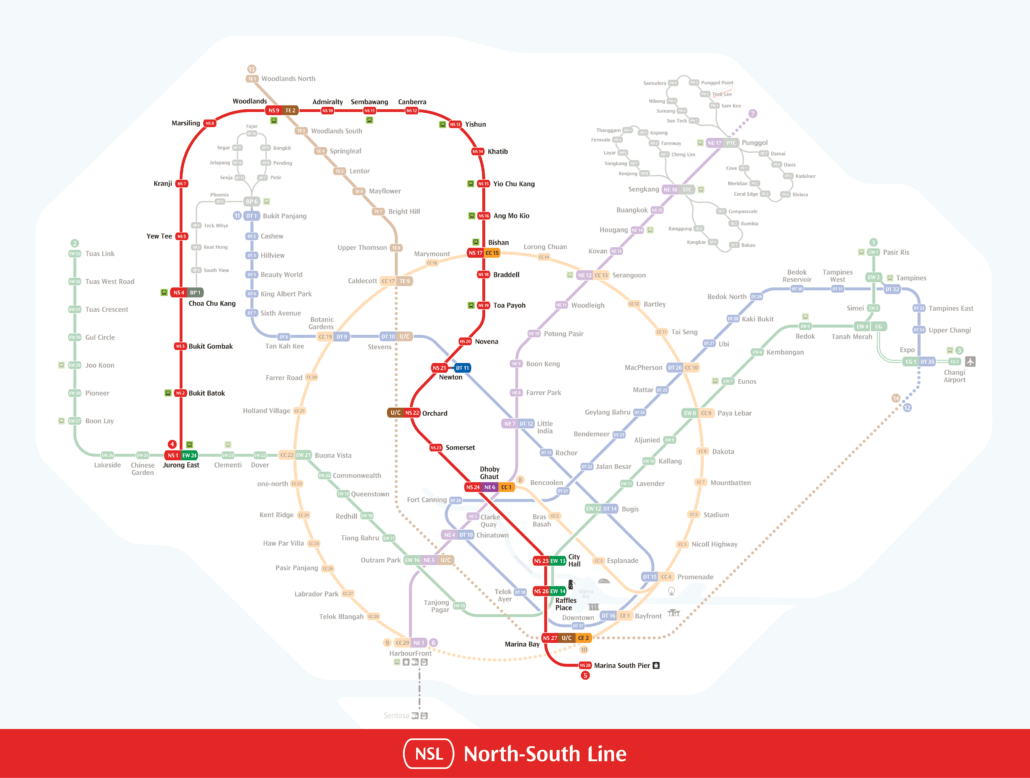
With a North-South Line map, you can plan your trips more effectively and confidently make the most of what the city-state has to offer. Illustration of Line (click to expand)Map showing all stations, interchanges, and connections using. The Singapore Metro is a great way how you will travel around the city.
| Station | Interchange |
|---|---|
| Jurong East | East West Line |
| Bukit Batok | |
| Bukit Gombak | |
| Choa Chu Kang | |
| Yew Tee | |
| Kranji | |
| Marsiling | |
| Woodlands | Thomson-East Coast Line |
| Admiralty | |
| Sembawang | |
| Canberra | |
| Yishun | |
| Khatib | |
| Yio Chu Kang | |
| Ang Mo Kio | |
| Bishan | Circle Line |
| Braddell | |
| Toa Payoh | |
| Novena | |
| Newton | DTL |
| Orchard | |
| Somerset | |
| Dhoby Ghaut | NE Line, CC Line |
| City Hall | EW Line, NS Line |
| Raffles Place | EW Line |
| Marina Bay | CE Line, DT Line |
| Marina South Pier |
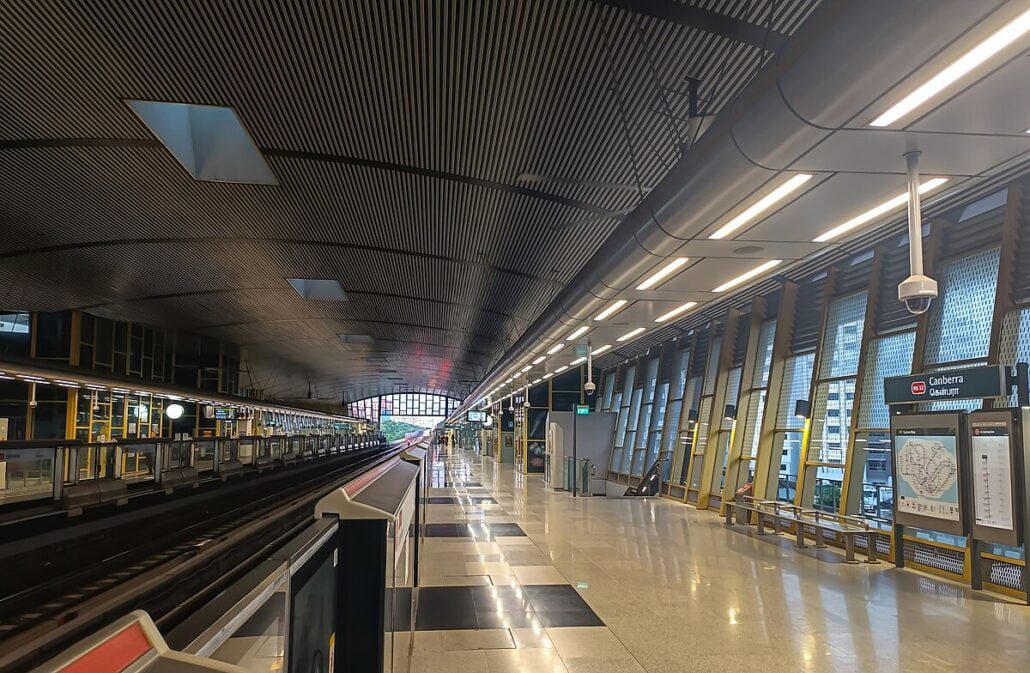
By viewing the North-South Line map, you can see which stations are nearest to where you want to end up, work out how best to change lines, and even follow your journey through central Singapore.
For any trips you are taking on the North-South Line, it is important to monitor when your train comes. Knowing the departure times for each station’s first and last train, along with how long it takes, will help you effectively plan your day to enable a great commute experience.
For a more comprehensive breakdown of the North-South Line operating hours, here’s when you can expect the first and last trains to depart from various stations.
| Station | First Train Departure | Last Train Departure |
|---|---|---|
| Marina Bay | 5:33 AM | 10:47 PM |
| Orchard | 5:48 AM | 11:05 PM |
| Ang Mo Kio | 5:36 AM | 11:06 PM |
NB: The trains may run intermittently, such as during peak periods, maintenance works, or unexpected reasons. If there is a splash, or when things happen to be delayed, announcements will also follow over the intercom, making sure you know exactly how late your train following one of those fine white vehicles is. In the process, you can also do your part in checking out if there are time-to-time timetable changes and how often trains run on all parts of the North-South train line to register a short-travel waiting period while heading up for other purposes. Preplan, Be Aware And Go For A Hassle-Free Journey On the Singapore North-South Line.
Regardless, you should understand the fare structure and payment options available when journeying on the North-South Line in Singapore. This will help you to make an informed decision that is not only convenient but also affordable for your trips.
In a nutshell. examples include;
Fare Calculation: North-South Line (distance-based fares) This price would go up the farther you travel. The transport authority provides the official fare chart to show how much you owe.
Please be aware that the fare structure may change periodically, and it is always good to know in advance how you can be affected by any changes.
There are a few ways to pay for your trip on the North-South Line:
With a better understanding of the fee structure and payment methods, you will be able to determine which is the best option for your North South Line rides, which then would make travelling much smoother and more enjoyable. To know more about the up-to-date fare details, go through their website or download and use its mobile application that helps in knowing transit fares on a pinpoint time information basis.
Tip: Know what you are going to pay for and prepare the payment so that your journey goes without a hitch on the North-South Line.
Public transportation is often plagued with unpredictability. So make sure you are prepared and know how to handle North-South line delays! Proactivity and the knowledge of alternative ways to travel seasons or services will ensure your commute is smooth even when there are disruptions.
Follow these tips to get through the inevitable bumps in travel:
Utilize bus bridging services: This includes bus bridging services, which are commonly put in place during disruptions to offer alternate travel. Get to know which bus routes can get you on your way again. The details of bus bridging services will be made available at MRT stations and announced by SMRT.
“Bus bridging usually comes into effect during disruptions, offering an alternate transportation choice.”
As always, disruptions on the North-South Line may cause inconvenience to many commuters but are temporary. The way to stave off headaches is by trying to keep up, staying out of ruts, and knowing your options.
| Disruption Management Tips | Benefits |
|---|---|
| Stay updated with service advisories | – Remain informed about disruptions – Plan your travel accordingly |
| Utilize bus bridging services | – Access alternative transport options – Continue your journey seamlessly |
| Explore other transport options | – Find efficient alternatives – Reach your destination on time |
Join us on a thrilling ride as we explore the North-South Line extension and new developments in Singapore’s top transport network. The expansion of this iconic MRT Line Singapore has since given rise to new stations, making commuting even more convenient and accessible.
The new North-South Line extension has opened up two hidden neighbourhoods that are about to come alive: Bukit Gombak and Woodlands. And being paces that have different unique attractions, vibrant Markets and so colourful culinary varieties are favourite destinations for locals as well as tourists.
Visit the lush greenery and recreational spaces such as Little Guilin and Bukit Batok Nature Park to enjoy nature at its best if you are a lover of Mother Earth. These peaceful places offer a refuge from the concrete jungle and resort to green surroundings, with — some of them – allowing recreational activities, including flora.
Woodlands offers the best of urban development along with a dose of natural beauty. Stroll through the Woodlands Waterfront Park, take in expansive views of the Johor Strait, or visit Admiralty Park, offering a lush free space bustling with plants and animals.
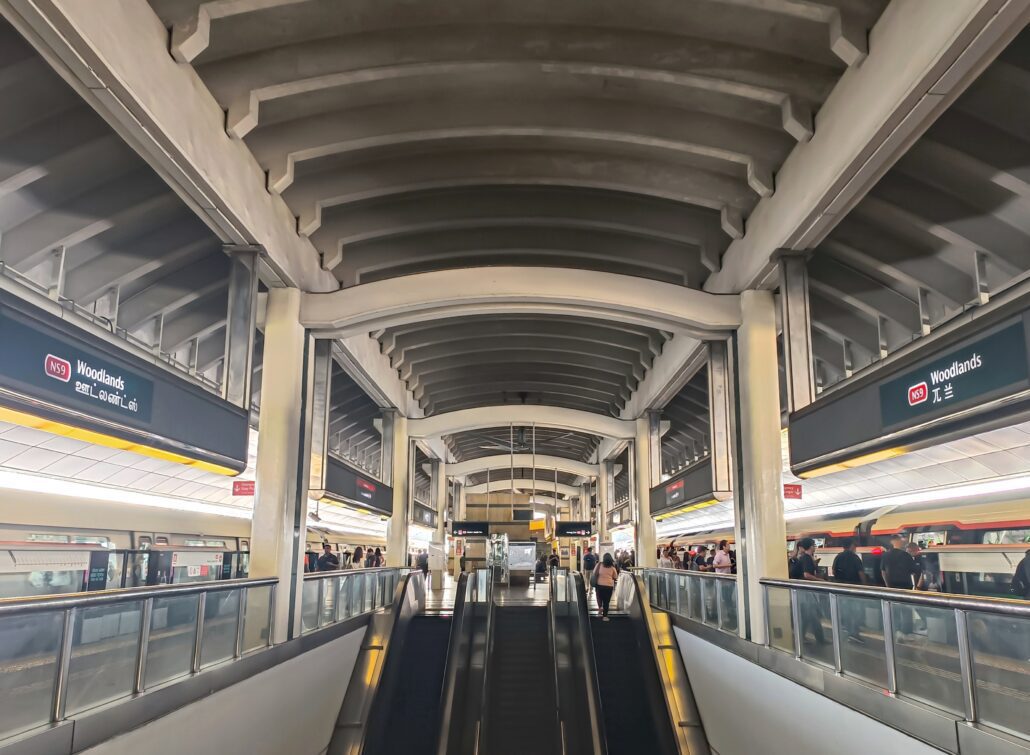
Take this chance to enjoy your visit here even more – with the colourful selection of shops, cafes, and eateries that have all popped up around some of these new stations as part of the North-South Line extension! Immerse yourself in the local culture, eat delicious food, and discover all kinds of hidden gems in these lively locales.
“We hope the North South Line Extension will open up new areas for commuters to discover and enjoy, while also experiencing the rich juxtaposition of Bukit Gombak’s irresistible charm with Woodlands urban vibrancy.”
| Station Name | Interchange |
|---|---|
| Bukit Gombak | None |
| Woodlands | Woodlands North (upcoming) |
The North-South Line extension has made your travel options aplenty, with even more reasons to explore and experience the lively pulse of Singapore’s city centre wherever you go. This Eid, move beyond the usual from Bukit Gombak or Woodlands and explore a fresh side of these recent discoveries.
The North-South Line is a key commuter route in Singapore that serves much of the urban transportation in the nation’s densely populated southern part. This particular line is a lifeline for thousands of residents and tourists because it is an active transport artery connecting essential city-state hubs on the daily commutes.
Operating as a part of the Singapore transport system, SG MRT North South Line is an important railway link between the northern and southern parts, which provides to get over on now traffic-notorious commuting stretches efficiently from residential areas through business hubs down to attractive tourist sights.
The service provided by the MRT North South Line is extensive to serve both local people in general and tourists, who can rely on it as a time-saving mode of transportation from one place to another. This is a perfect route for commuting, whether you are going to work or meeting friends in the city.
The North-South Line also has a frequent service to minimize the waiting time for the passengers. The line has a high frequency of trains during peak hours that allow commuters to reach their destinations without the need for timetables. Moreover, the line is of ample size and can also accommodate a huge number of passengers, hence making it a suitable choice for urban transportation.
| Key Statistics | Figures |
|---|---|
| Length of Line | Approximately 45 kilometres |
| Number of Stations | 30 stations |
| Daily Ridership | Over 1 million passengers |
| Peak Hour Frequency | Approximately 2 to 3 minutes |
| Operating Hours | From early morning until midnight |
These figures are a testament to the extent of importance that the North-South Line has in Singapore’s public transport sector. The line not only has a wide reach but also is the fastest and relieves commuters travelling within the city seamlessly from the long chaos of other transportation modes, which means less time consumed on daily travel.
Resident or tourist, the North-South Line figures heavily in your life as a regular commuter through Singapore’s urban landscape. Get in touch and start experiencing the convenience, availability, and quality of this transportation artery today – after all, a zone in tropical Singapore where lots come dji osmo drive to be awesome!
Rates & FeesAll Other TransactionsExpand your travel options by checking out connections and interchanges beyond the North-South Line. Learn how different types of MRT lines, bus services, and other public transport modes can be combined in your travel movements to enjoy the rich diversity offered by each neighbourhood or enclave throughout Singapore.
The North-South Line is only the beginning of your Singapore travel adventure with people’s stories. There is more to explore outside of the North-South Line; go further and discover Singapore’s well-connected public transport.
The interchanges between the MRT lines are a good way to reach new destinations. The MRT system in Singapore is built for simple interchanges so you get on to another line seamlessly. Some important MRT lines to transfer from North South Line :
| MRT Line | Interchange Station |
|---|---|
| East West Line | Jurong East |
| Circle Line | HarbourFront |
| Downtown Line | Chinatown |
So much so that these interchanges make it super easy for you to explore the entire country from dealing around Singapore with just hop-on and off between any districts, with that in mind, the fact to note is you place yourself virtually next door to two MRT lines when connecting at the link, which lets you get into all sorts of adventures, be it heading over to Sentosa Island via The Circle Line or dancing through the cultural enclave of Little India by using Downtown Line.
Beyond the North-South Line, Singapore’s wide bus network is a flexible way to get around in addition to MRT lines. Many bus services are plying the city that can get you to places not directly linked up by Singapore Mrt Map. For those who prefer to take public transportation, you can also try these bus services:
where it all comes together at bustling East Coast Park.
Pair up with various MRT lines and buses to produce tailored travel plans that direct you to all extra destinations as well as plenty of small treasures there are in Singapore.
“Beyond that mythical line are entire new worlds in which you can experience variations of the island’s diverse tapestry, its animated culture, and varied neighborhoods. –.” – Emily Wong, Travel Enthusiast
Don’t forget to also refer to the MRT system maps and bus schedules of both lines when planning your daily journeys. TransitLink website and mobile app are also good places to get more information on routes and timing.
You can take advantage of Singapore’s extensive public transportation network to explore all parts of the country. So open up your mind, not just the North-South line, but use its convenience and connection to discover Singapore’s buried treasures.
In summary, The North-South Line is a heavy-duty mass rapid transit line that not only serves conveniently and quickly but also leads you to the rich history of this city-state accompanied by various cultural interests.
Learn all about the North-South Line and its routes, stations, timings as well as fares (tap me!) to easily work your way around this line during your Singapore vacation; enjoy a hassle-free visit with more fun! Whizzing to and from work, wandering the Botanic Gardens Singapore or Orchard Road — another great reason why Singapore is a luxury city on an island; this transport artery links you up with all sorts of different experiences.
While you are travelling, remain informed about the timetables of trains on that line and if there are any changes to the service. Strategize your travels and use the extended reach of all these connections beyond the North-South Line to discover even greater depths in Singapore’s ever-blossoming operational urban layouts.
And so through all this history, connectivity, and close link with the other transportation services in Singapore, it is quite indicative that the North-South Line certainly embodies everything good about what makes up an effective and efficient public transport system. Well then, try not to miss yourself from getting on the bright city and taking a ride through this Lion City.